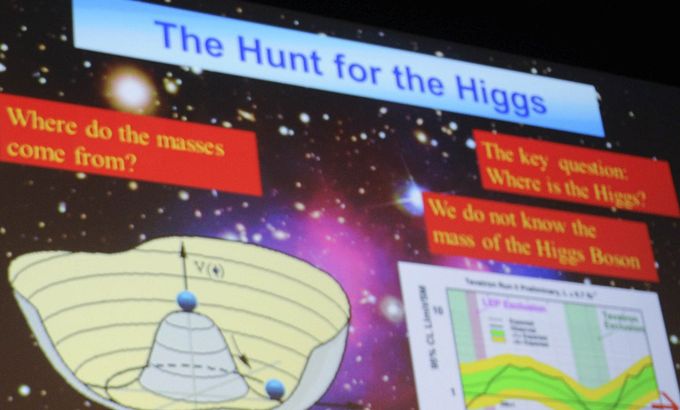
Is the search over for Higgs boson?
As the elusive particle is found after decades of research we ask if it is real and what does its discovery mean.
For decades, scientists have searched for an elusive particle – the Higgs boson – something that would help explain how the universe began, and how it carries on.
The main development is that scientists working at the CERN facility in Switzerland say they have now discovered evidence of this new subatomic particle which is sometimes called the ‘God particle’.
Keep reading
list of 4 itemsCould shipping containers be the answer to Ghana’s housing crisis?
Are Chinese electric vehicles taking over the world?
First pig kidney in a human: Is this the future of transplants?
|
“The search is not over, what is over now is that we believe we have seen the Higgs. Now we have to understand the nature of the particle we have seen …. But what is this new particle? The only thing we know today about this particle is about the mass of this particle …. [There are]a lot of things we have still to understand that we don’t understand yet. “ – Samira Hassani, a researcher at the Atomic Energy and alternative Energies Commission |
It took scientists more than 15 years to build a massive detector underground, which captures images of what happens when protons collide.
They have found proof of the existence of what looks like the Higgs boson: a crucial particle which helps explain how the universe came to be and therefore the stars, planets and human life.
It is the last missing piece of the Standard Model, the theory that describes the basic building blocks of the universe. It also solves the mystery of how objects get their mass.
The Higgs Boson has eluded scientists for decades and they are calling it a historic discovery – their field’s equivalent of putting a man on the moon.
But if you are not interested or working in science, does it really matter?
It might take years, maybe decades, until we see the full impact of the discovery of the Higgs boson in new technology. But for now, it has re-energised the scientific community, and opened up a new world of possibilities many thought they would never see in their lifetime.
So is Higgs boson now a reality? What does its discovery mean and where does it fit into the grand scheme of our universe and our lives?
To answer these questions, Inside Story, with presenter Kamahl Santamaria, is joined by guests: Samira Hassani, a researcher at the Atomic Energy and Alternative Energies Commission, which has been collaborating with CERN on the Higgs Boson Project; Otto Rossler, a professor of Theoretical Biochemistry at the University of Tübingen; and Peter Woit, senior lecturer in the Mathematics Department at Columbia University.
|
“It may not improve your life tomorrow, but it will improve your life 50 years down the line. And there are many examples of that. For example you can go back to the early days of electricity, when people were doing experiments on electricity, and somebody might have said in the audience ‘very interesting, but how is it going to make my life better?’ Well can you imagine living now without electricity?” Mike Tuts, physicist |
___________________________________________________________________________________________________
FACTS BOUT THE HIGGS BOSON
- Scientists have discovered new subatomic particle that could be Higgs boson
- CERN, the Geneva-based European Organisation for Nuclear Research announced the latest findings
- CERN houses world’s largest particle physics laboratory
- Higgs boson is believed to be building block for all matter
- The origin of mass has been fiercely debated for decades
- Higgs boson was named after British physicist Peter Higgs
- Search for Higgs boson is done by smashing particles together
- Large hadron collider in Europe is biggest particle accelerator which smashes together particles at high speed
- Higgs boson could help show how the universe was formed
- Finding Higgs boson would vindicate the 1970s Standard Model of physics
- Standard Model of physics tells us universe is made from 12 particles